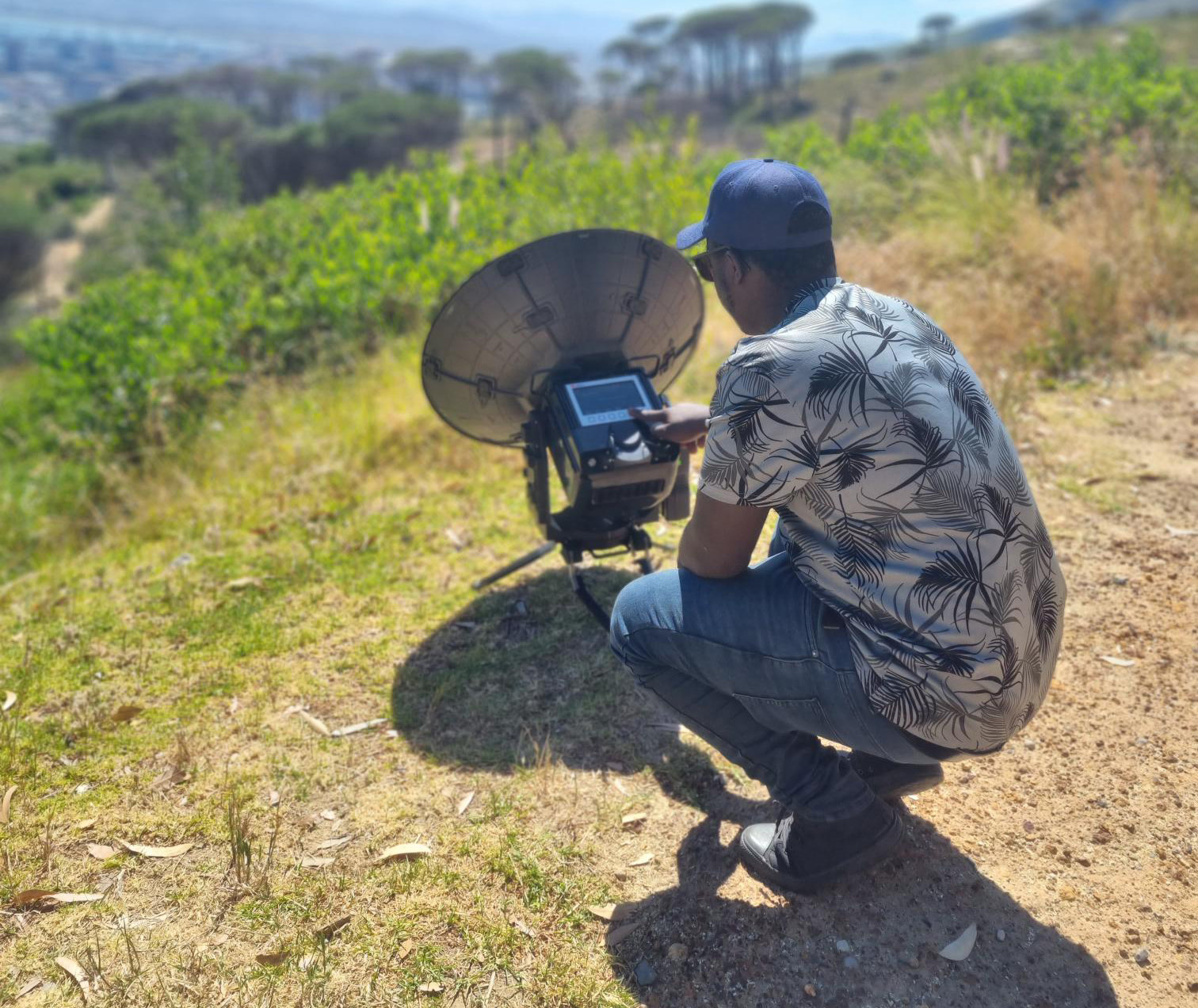
5 minute read
Reaching for the stars for emergency communication
Advanced real-time communications and continuous situational awareness play a pivotal role in making high-pressure decisions in the toughest emergency situations. When a natural disaster destroys the existing communications infrastructure or if the emergency scenario is in a remote area beyond the reach of terrestrial networks, satellite communications is the only tried and tested method for maintaining this crucial connectivity. It becomes a lifeline in these critical situations.
Anthony Kincade, Business Unit Director, Satcom, Milexia
The impact of a disaster not only results in the loss of human life but also leads to extensive environmental damage and has a long-lasting effect on the country's economic structure. In 2023, the Emergency Events Database (EM-DAT) recorded a total of 399 disasters related to natural hazards, Affecting 93.1 million people. The economic losses amounted to US$202.7 billion.
The development of hybrid, space-based satellite communications, which include multi-orbit and multi-band networks is an important factor in meeting future demand of the ever-increasing occurrence of natural disasters. Alongside the development of a range of satellite ground station equipment for IoT, fixed and transportable applications using LEO MEO and GEO satellites for Satcom-on-the-move and Satcom-on-the-pause.

Collaboration – from the ground to the stars
Whilst developments in these areas are well underway, industry collaboration is what is really going to make the difference if we are to create a world where ‘always on’ multi-orbit connectivity is a reality. With the ability of hybrid capacity to switch terminals seamlessly between orbits and terrestrial networks satellite terminals that are as easy to use will become the technology of choice.
For this to happen, we require one single unified network. This means leaving any idea of competition between manufacturers behind. From the ground to the stars, we must collaborate and consolidate. This involves the whole communication chain from satellite ground station equipment manufacturers working with global satellite and terrestrial operators. Tech providers and operators collaborating to support an overarching multi-orbit vision guided and supported by industry associations and working groups. Aligning tech with academia and open standards to bring resilience and operational agility in the face of any emergency.

Leading by example: joining forces for international rescue
When a magnitude 6.8 earthquake struck the northern coast of Morocco on September 8, 2023, widespread damage was caused to buildings, infrastructure and communications networks. The Moroccan government declared a state of emergency and mobilised rescue teams and humanitarian aid to assist the affected areas. Aid agencies and rescue teams came together and provided essential communication and support for the displaced and lost people.
Milexia, brought together ST Engineering iDirect (a global leader in satellite communications), Holkirk Communications (a communications manufacturer of lightweight satellite uplink terminal) and Intelsat (an operator of one of the world’s largest integrated satellite and terrestrial networks) to realise a complete communication solution for UK International Search and Rescue (UKISAR) with the vital end-to-end communications capabilities to optimise recovery efforts.
Recognising the urgency of the situation, the UKISAR team deployed to Morocco on the 10th of September, on behalf of the UK Foreign, Commonwealth & Development Office (FCDO) equipped with the new state-of-the-art communication technology. The Scorpion-Lite, pre-configured and certified to operate within the Intelsat FlexMove network, provided the UKISAR team with reliable and high-speed broadband connectivity, enabling them to establish seamless communication with their headquarters and much needed welfare connectivity to their loved ones.
The Intelsat FlexMove network provided enterprise grade connectivity for mission critical applications. Powered by the ST Engineering iDirect Velocity® platform, FlexMove played a pivotal role in ensuring that the UKISAR team had access to always-on high-speed data, video, and voice communication in any environments they encountered. The vital connectivity provided communications on the pause to the first responders to coordinate rescue missions, access to critical information and welfare networks for the team’s well-being and provided onsite central operations for medical support.
The emergency mission in Morocco serves as a powerful example of the fact that collaboration of technologies and networks is the only way to upscale capacity and act with resilience in times of emergency. Cutting-edge satellite technologies and partnerships empower first responders and aid organisations to efficiently carry out their missions, particularly in challenging and remote environments.
Looking forward: a unified network, a unified vision
The next generation of satellite-enabled connectivity holds the potential to revolutionise emergency disaster response, and significantly reduce GDP expenditure but more importantly save lives. An optimistic future is within our reach, but it can only be realised through closer collaboration and continuous innovation within the sector. A proactive approach to leverage a hybrid mix and interchange of communications technologies to create one unified, space-age, next-gen network. Always-On. On-Demand. No matter the terrain. It's time for the industry to unify and work to common standards that allow for true interoperability and resilience so teams can focus on the task at hand – saving lives.
For further information contact: https://milexia.com/uk/

